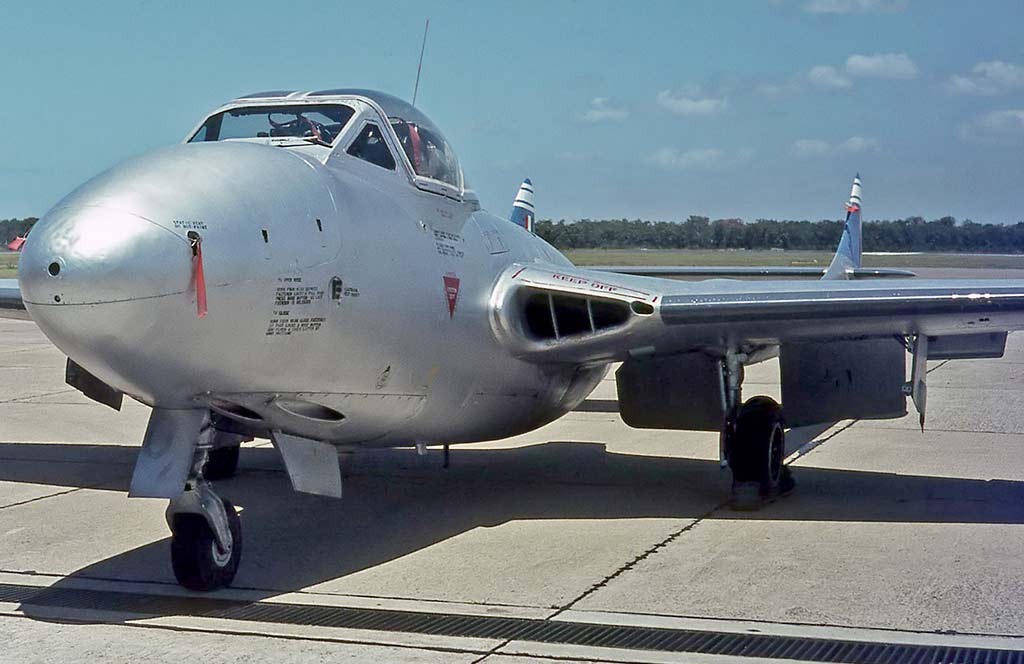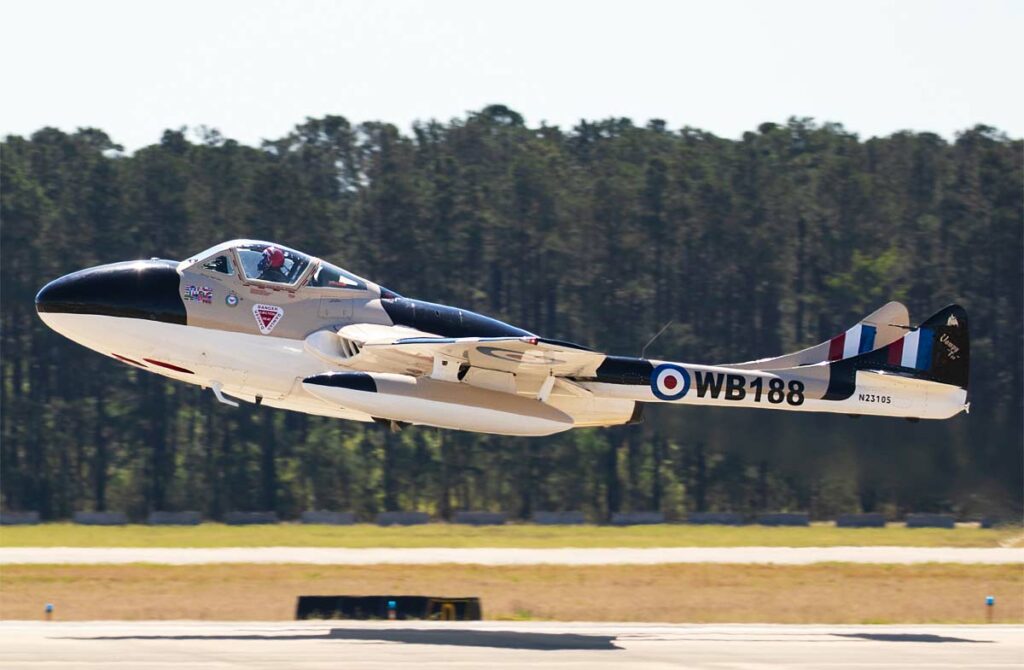The De Havilland Vampire, a pioneering British jet fighter, excelled with its distinctive twin-boom design and innovative Goblin engine.
The De Havilland Vampire was a groundbreaking jet fighter of British origin, known for its distinctive design and significant role in the early era of jet aviation. It was one of the first jet fighters to enter service with the Royal Air Force and saw widespread use in various air forces around the world.
The Vampire represents a crucial transition in military aviation, marking the shift from propeller-driven to jet-powered aircraft. Its introduction into service marked a new era in speed, altitude, and performance for fighter aircraft.

History of the Development of the De Havilland Vampire
The De Havilland Vampire’s development was a direct response to the rapid advancements in aviation technology during World War II. With the advent of jet propulsion, there was an urgent need for effective jet-powered fighters to maintain air superiority.
The development program was initiated by the British Ministry of Aircraft Production, with De Havilland Aircraft Company leading the design and construction. The primary objective was to create a jet fighter that could outperform existing propeller-driven aircraft in terms of speed and altitude.
The project, initially known as the De Havilland DH.100, was launched in 1942. The first prototype took flight on September 20, 1943. This event marked a significant milestone in British aviation history, heralding the arrival of the jet age.
The Vampire does not have a specific NATO nickname as it was primarily in service before the standardization of NATO reporting names.
Design of the De Havilland Vampire
The Vampire’s design was revolutionary for its time. It featured a twin-boom configuration, which was unique among early jet fighters. This design accommodated the de Havilland Goblin turbojet engine, positioned in the fuselage behind the cockpit.
The aircraft measured 30 feet 9 inches (9.37 meters) in length, with a wingspan of 38 feet (11.58 meters). The twin-boom design allowed for a shorter jet pipe, reducing power loss and improving efficiency. It also facilitated the installation of armaments, which included four 20 mm Hispano cannons.
One of the main drawbacks of the Vampire was its limited range and relatively lower speed compared to later jet fighters. However, its innovative design and construction techniques, including the extensive use of wood, were significant advancements at the time.
Performance of the De Havilland Vampire
The De Havilland Vampire was powered by the de Havilland Goblin engine, producing around 3,100 pounds of thrust. This enabled the aircraft to reach a top speed of approximately 548 mph (882 km/h) and a service ceiling of around 42,800 feet (13,045 meters). The Vampire had a range of about 1,220 miles (1,960 km).
When compared to its contemporaries like the Gloster Meteor, the Vampire was slightly slower but offered better maneuverability and climb rate. Its performance was impressive for the era, though it was soon surpassed by more advanced jet fighters in the 1950s.

Military Use and Combat of the De Havilland Vampire
The Vampire served primarily in the fighter and ground-attack roles. Its armament, consisting of four 20 mm cannons and the capacity to carry rockets or bombs, made it versatile in various combat situations.
The Vampire saw combat in several conflicts during the early Cold War era. It participated in the 1948 Arab-Israeli War, the Malayan Emergency, and other smaller conflicts. The aircraft was used for air-to-air combat, ground-attack missions, and reconnaissance.
Competing with aircraft like the American P-80 Shooting Star and the Soviet MiG-15, the Vampire demonstrated its capabilities in various theaters of operation. It was particularly noted for its effectiveness in ground-attack roles.
The Vampire was exported to numerous countries and served in air forces across Europe, Asia, Africa, and South America. It remained in service with several air forces into the 1970s and 1980s.
The De Havilland Vampire holds a significant place in aviation history as one of the first generation jet fighters. Its innovative design and performance characteristics represented a major leap forward in military aviation technology. The Vampire’s legacy is reflected in its widespread use and the foundation it laid for future jet fighter development.
Back to the Fighter Jet section.